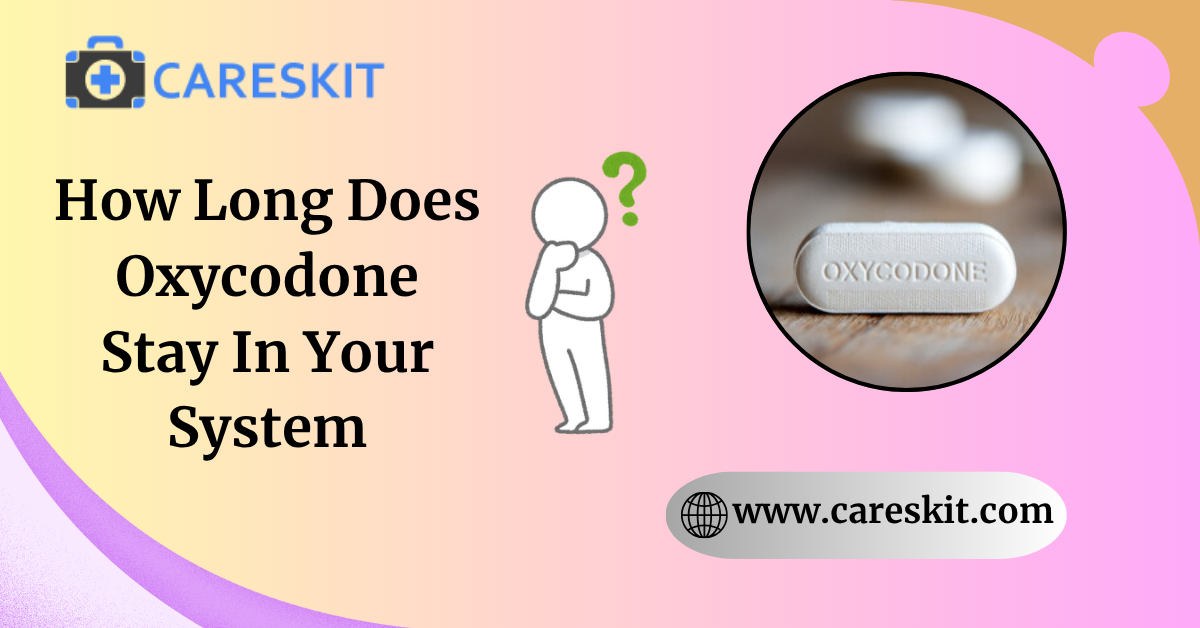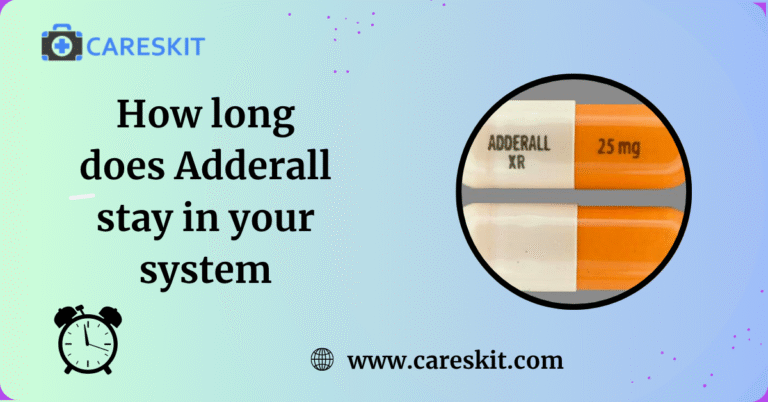How Long Does Oxycodone Stay in Your System? Drug Test Guide
Oxycodone is a semi-synthetic opioid medication that is used to control moderate to severe pain and is also available in immediate-release and extended-release formulations. Due to its high potency and potential for abuse, you should know how long does oxycodone stay in your system before using it.
The presence of oxycodone will affect your body with other drug interactions, side effects, and long-term effects of the pill. Several factors, including metabolism, body mass, age, hydration, and physical activity, will determine the duration of oxycodone in your body.
In this blog, we will discuss how long does oxycodone stay in your system for a drug test, like blood, urine, hair, and saliva, and what factors cause oxycodone to remain in the system.
What is Oxycodone?
Oxycodone is a class of semi-synthetic opioid analgesic used to treat severe pain, and it is available in both immediate-release (IR) and extended-release (ER) forms, allowing it to be used for both short-term and chronic pain conditions. It is prescribed by most physicians for their patients after any kind of accident, serious injury, or post-surgical pain.
The brand name of Oxycodone/acetaminophen is Percocet. It comes in a variety of forms, like oral solution, tablet, and capsule. As an effective medication (also for acute and chronic pain), due to high potential for dependence, tolerance, and abuse, oxycodone is a Schedule II controlled substance and should be utilized carefully under a physician’s supervision.
How Fast Does Oxycodone Take Effect?
If you take Oxycodone orally, it starts working within 15 to 30 minutes, and it suddenly relieves pain or breakthrough pain. The peak effect, when the pain relief is most intense, usually occurs within 1 to 2 hours. Duration of action varies by formulation: immediate-release oxycodone tends to provide relief for 4 to 6 hours, whereas extended-release formulations, including OxyContin, are meant to act for 12 hours or longer.
Response time in an individual may vary depending upon factors such as metabolism, tolerance, and whether the drug is administered on an empty or full stomach. Due to its quick and strong action, oxycodone should be taken precisely as directed to prevent side effects, overdose, or dependence.
How Long Does Oxycodone Stay in System?
If you want to know how long Oxycodone stays in your system, the information below may be very useful to you. The detection of Oxycodone in your system may vary due to different factors, including
- Your metabolic rate
- Your frequency and duration of use
- Your dose amount
- The sensitivity of the test
- Organ health conditions (especially the Liver and kidneys)
- Your overall general health
The half-life for a substance is the time in which half of the medication to leave the body. For oxycodone, this can be as little as three to five hours. It can take as long as 20 hours to fully remove it from your system. How long it can be detected will vary depending on what method is being used:
- Blood Test: Blood may be detectable within 15 to 30 minutes of use, and it lasts for up to 24 hours.
- Urine Test: Oxycodone will be detectable in urine within 1 to 2 hours and may last for up to 1 to 4 days.
- Saliva Test: The saliva test has shorter detection windows, usually up to one to two days.
- Hair Follicle Test: Oxycodone will possibly be detectable up to 90 days in hair follicle tests.
Key Factors That Affect Oxycodone Elimination Time
Several key factors can show how long oxycodone stays in your system for a long time and how quickly it can be detected. These factors include
Age: In research of different medicinal purposes, older adults metabolized the medication at a slower rate compared to younger adults. Oxycodone can build up in older adults and may exhibit various side effects such as drowsiness and dizziness.
Oxycodone Formulation: It is available in an immediate-release (IR) formulation that is eliminated faster than the extended-release (ER) formulation. And also, it is made to remain for a longer duration in the body.
Metabolism Rate: Individuals who have a faster metabolism will process and eliminate oxycodone faster. Metabolism can be determined by some factors like age, genetics, and overall health.
Dosages of Use: There might be some situations with higher doses and frequent or prolonged use of oxycodone in which oxycodone would come to a stage of accumulation in the body, such that you might get rid of the oxycodone at a slower rate.
Kidney Function: A person who has poor kidney function can metabolize the drug very slowly.
Liver Function: Oxycodone is primarily metabolized by the liver; those who have any liver function problems may metabolize the drug slowly.
Oxycodone Withdrawal Symptoms:
When an individual discontinues oxycodone upon regular or chronic use, particularly if the medication is discontinued abruptly, it may cause withdrawal symptoms. The most common withdrawal symptoms included
- Anxiety or irritability
- Muscle aches and joint pain
- Sweating and chills
- Nausea, vomiting, or diarrhea
- Runny nose and watery eyes
- Yawning and fatigue
- Insomnia or restlessness
- Increased heart rate and high blood pressure
Oxycodone withdrawal is uncomfortable but not usually life-threatening. Tapering the dose slowly under medical guidance is usually advised to alleviate symptoms. Physicians might use medications such as clonidine, buprenorphine, or methadone in a few instances to assist with withdrawal and recovery.
Frequently Asked Questions (FAQs)
When will Oxycodone begin to wear off?
Oxycodone will usually start to wear off in a few hours, depending on the type of formulation you took. For immediate-release, the pain relief usually starts in about 15-30 minutes, peaks around 1-2 hours, and lasts about 4-6 hours before wearing off. Extended-release formulations, like OxyContin, are designed to slowly release the drug over an extended period to provide pain relief for up to 12 hours or longer; therefore, those effects will wear off more slowly.
How long will you test positive for opiates?
Concerning positive opiate test results, it is going to depend on the specific drug taken, the type of drug test used, dosage, frequency of use, and personal metabolism.
Conclusion
How long does oxycodone stay in your system depends on dosage, body chemistry, and testing procedure. Whenever taking oxycodone on prescription, it is recommended that you take it only as prescribed and notify both your healthcare provider and the agency if you are being asked to undergo any drug test.





